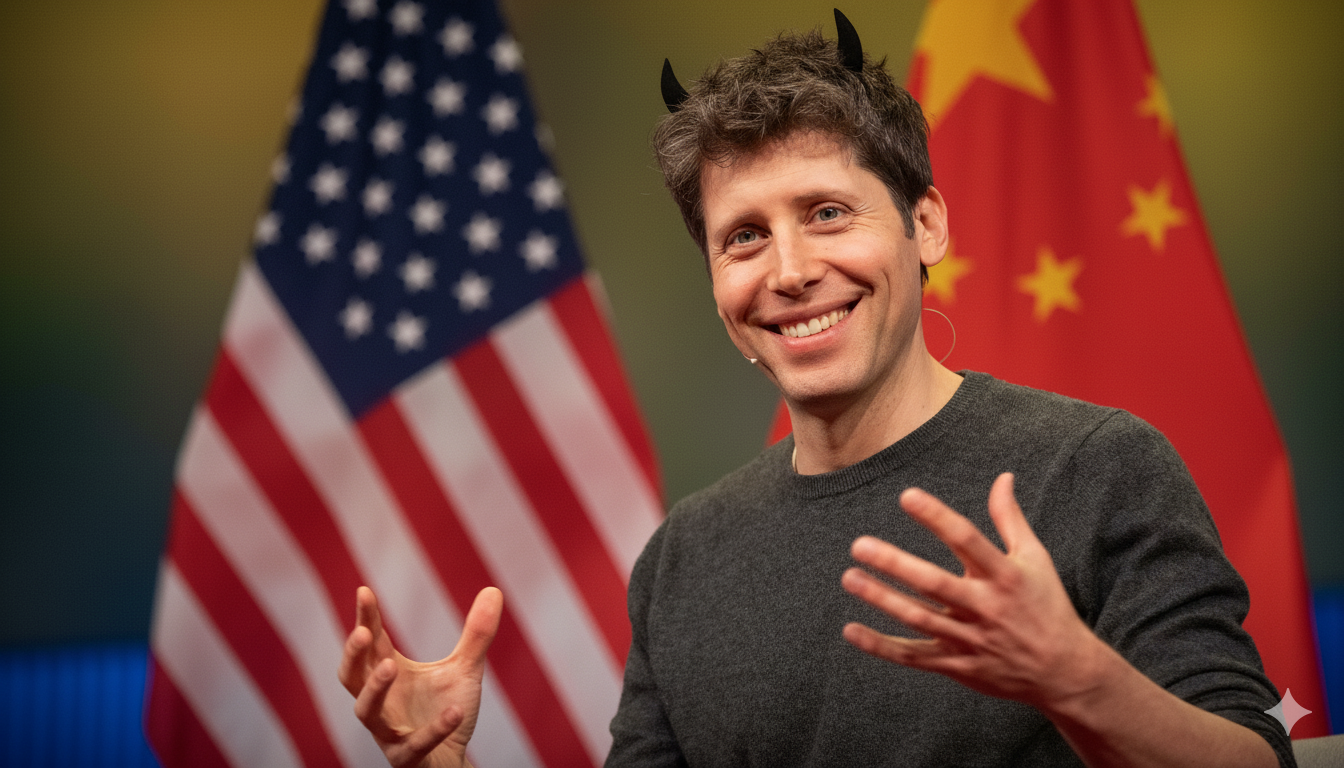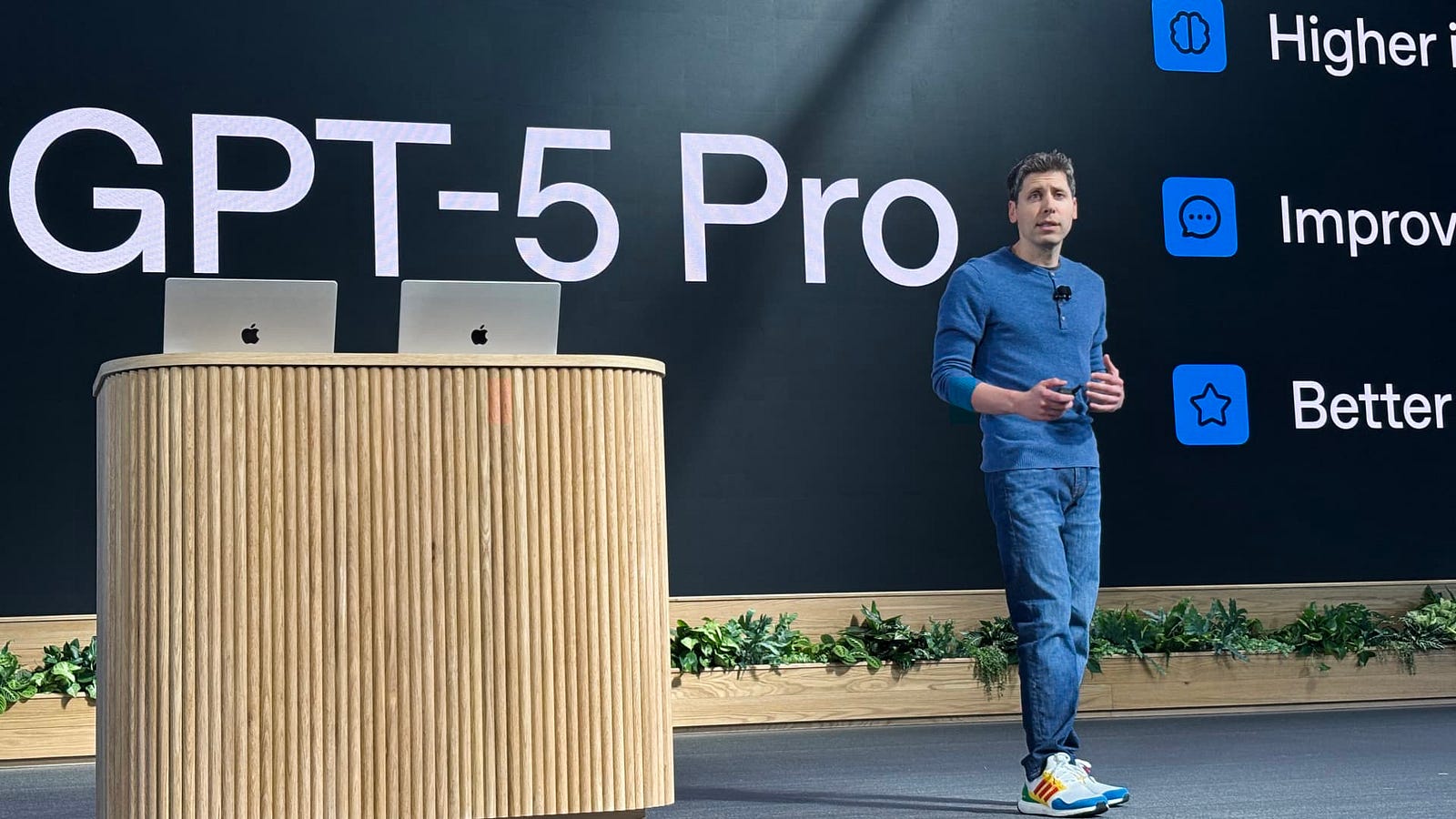
Remember when everyone thought OpenAI was finished? Just a few months ago, a tiny Chinese startup called DeepSeek came out of nowhere and basically said, “We can do everything OpenAI does, but for 20 times cheaper.” The tech world went absolutely insane. Nvidia lost $589 billion in market value in a single day. OpenAI’s $200 subscription suddenly looked like highway robbery. People were literally saying this was the end of American AI dominance.

Then OpenAI walked into their Developer Conference this week and delivered the most savage comeback in tech history. They didn’t just answer DeepSeek, they accidentally destroyed billion-dollar companies, made Chinese video tools irrelevant, and changed the rules of the entire AI game. This isn’t just another product launch; it’s the moment everyone realized that reports of OpenAI’s death were greatly exaggerated.

Let’s rewind to January when DeepSeek R1 dropped and literally broke the internet. This wasn’t just another AI model, this was a direct missile aimed at OpenAI’s entire business model. While OpenAI was charging $200 monthly for their Pro subscription and $15 per million tokens for API access, DeepSeek offered comparable reasoning capabilities for essentially free.
The numbers were brutal for OpenAI. DeepSeek claimed they built their R1 model for just $5.6 million while OpenAI, Google, and Meta were spending hundreds of millions or even billions. Even more embarrassing, DeepSeek did this using “weaker” AI chips that the US had banned from export to China, proving that massive hardware spending wasn’t actually necessary.
Reddit exploded with posts like “DeepSeek has rat-effed OpenAI’s 2025 business model.” Tech analysts were writing articles with titles like “How China’s new AI model DeepSeek is threatening U.S. dominance.” Sam Altman himself called DeepSeek “impressive” while nervously adding that OpenAI would “clearly produce superior models” in the future.
The panic was real. OpenAI had to immediately add hundreds of free O1 queries to their free tier just to stop the bleeding. Their entire strategy of charging premium prices for reasoning capabilities suddenly looked questionable when a Chinese startup was giving away similar capabilities for free.
But here’s where the story gets interesting. While tech Twitter was busy comparing DeepSeek to ChatGPT and debating whether Chinese AI would dominate the world, everyone missed what was happening in the video generation space.
Chinese companies like Kuaishou and Alibaba were releasing impressive video tools like Wan2.2 and Kling 2.1. These tools were generating cinematic 10-second videos at 1080p, creating viral TikTok content, and making tech YouTubers declare that China was “winning the AI war.” Content creators were making endless comparison videos, and the consensus seemed to be that American companies were falling behind in the video generation race.
OpenAI was unusually quiet during this period. While everyone else was making noise about their latest models and capabilities, OpenAI seemed to be taking their time. Critics started wondering if the DeepSeek shock had rattled them more than they admitted.
Then came OpenAI’s Developer Conference, and what happened next was like watching a master chess player reveal they’d been setting up checkmate for months. OpenAI didn’t just respond to their critics, they obliterated entire industries with two announcements that nobody saw coming.
First, Sora 2 didn’t just compete with Chinese video tools, it made them look like amateur hour. While Wan2.2 and Kling were celebrating 10-second clips, Sora 2 was generating 30–60 second mini-movies with physics so accurate that experts couldn’t tell them apart from real footage. But the real kicker? It integrated directly into ChatGPT, meaning 800 million weekly users suddenly had access to the world’s best video generation without downloading anything new.
Second, AgentKit accidentally solved the DeepSeek pricing problem by making AI automation so simple that traditional platforms became unnecessary. Companies that used to spend months building complex workflows were suddenly doing it in hours using drag-and-drop interfaces.
What makes this comeback so brilliant is that OpenAI didn’t just defend their position, they changed the entire game. DeepSeek’s advantage was being cheaper and open-source, but OpenAI made cost almost irrelevant by creating tools so integrated and easy to use that price became a secondary concern.
Agent Builder made creating AI automation as simple as playing with digital LEGO blocks. ChatKit let developers embed AI chat experiences in minutes instead of weeks. Connector Registry provided a single dashboard for managing all data sources. Suddenly, the complex workflows that companies like Zapier, Make, and n8n built their businesses around looked unnecessarily complicated and expensive.

Meanwhile, Sora 2’s integration meant that Chinese video tools weren’t just competing on technical capabilities, they were competing against a tool that 800 million people already had installed. That’s not a fair fight; that’s a massacre.
The results speak for themselves. Ramp built a complete buyer agent in just a few hours using AgentKit. LY Corporation created a work assistant in under two hours. Canva integrated a support agent in less than an hour and saved two weeks of development time.
These aren’t marginal improvements, they’re quantum leaps that make previous solutions look painfully slow and unnecessarily complex. Reddit’s automation communities are already buzzing with developers abandoning expensive subscriptions for AgentKit’s free, integrated approach.
The Chinese video tools that looked so impressive just months ago are now competing against something that requires no new accounts, no learning curve, and no additional software installations.
DeepSeek’s challenge forced OpenAI to confront a fundamental question: How do you compete when someone offers your core product for free? The answer wasn’t to match DeepSeek’s pricing, it was to change what the product actually does.
Instead of just making AI models cheaper or more powerful, OpenAI made AI disappear into tools people already use every day. You don’t need to choose between ChatGPT and DeepSeek if ChatGPT can also create videos, build automation workflows, and integrate with all your existing tools.
This isn’t just about beating the competition, it’s about making the competition irrelevant by playing a completely different game.
If you’re one of the people who thought DeepSeek proved that OpenAI’s days were numbered, this week should be a humbling reminder that the AI game changes faster than anyone expects. The Chinese companies that looked unstoppable are now scrambling to explain why their specialized tools matter when OpenAI offers integrated solutions.
Traditional automation platforms that seemed essential are suddenly looking at user bases migrating to simpler, free alternatives. The expensive subscriptions that seemed reasonable yesterday look overpriced when better functionality comes included with tools people already use.
This comeback reveals something important about the AI industry: technical superiority and lower costs don’t guarantee success if integration and user experience are better elsewhere. DeepSeek built a better, cheaper reasoning model, but OpenAI built a better ecosystem.
The lesson isn’t that OpenAI is unbeatable, it’s that in the AI age, the company that makes the best individual tool doesn’t always win. The company that makes AI disappear into daily workflows usually does.
DeepSeek proved that AI development costs can be dramatically lower than everyone thought, forcing all companies to reconsider their approaches. But OpenAI proved that integration beats specialization, even when the specialized tool is technically superior or cheaper.
This isn’t the end of the AI war, it’s the moment everyone realized the rules of engagement have fundamentally changed. Success isn’t about building the smartest AI or the cheapest AI; it’s about building AI that seamlessly integrates into how people actually work and create.
Chinese companies will adapt, automation platforms will evolve, and new competitors will emerge. But this week proved that in the AI revolution, the best comeback isn’t matching your competitor’s strengths, it’s making their strengths irrelevant.
Stay ahead of this insane AI race and discover the latest tools reshaping everything at www.beyondtools.io, because in this game, the only constant is that yesterday’s game-changer is tomorrow’s footnote.
The best part? We’re not just watching this AI war unfold, we’re getting incredible tools from every battle. Whether OpenAI, DeepSeek, or someone completely unexpected wins the next round, we’re the ones benefiting from their competition.
P.S This article is now live on my official website BeyondTahir and published on my Linkedin As well.